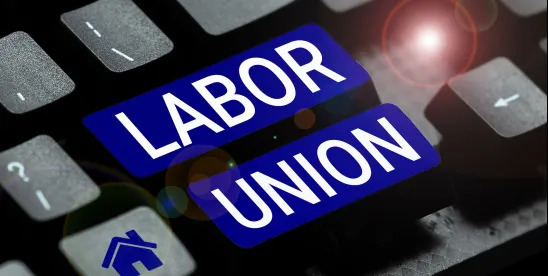On July 26, 2024, the National Labor Relations Board (“Board”) issued its Fair Choice – Employee Voice Final Rule (“Final Rule”), which rescinds a trio of April 2020 amendments to the Board’s Rules and Regulations[1] affecting the Board’s processing of petitions that ultimately make it easier for unions to maintain recognition and stifles employee choice in whether to be represented by a union. With the final rule, the Board once again revives many pre-2020 Board policies.
The Final Rule touches on three areas of the Board’s processing of petitions for elections: 1) revival of the blocking charge to delay elections – the Final Rule permits regional directors to delay representation and decertification elections upon a filing and resolution of an unfair labor practice charge (“ULP”) upon request by the party who filed the ULP; 2) return to an immediate voluntary recognition bar – the Final Rule removes the 45-day window so employees will no longer be able to request an election to challenge an employer’s recent voluntary recognition of a union; and 3) relationships in the construction industry – the Final Rule makes it easier for construction industry unions to become the exclusive bargaining representative for construction employees based only on contractual language.
According to the Board, the Final Rule “better protects employees’ statutory right to freely choose whether to be represented by a labor organization, promote industrial peace, and encourage the practice and procedure of collective bargaining.” Board member Marvin Kaplan dissented from the measure. The final rule takes effect September 30, 2024, and applies only to petitions filed after that date.
The Blocking Charge to Delay Elections
Under the Final Rule, the Board has revived its pre-2020 “blocking charge policy,” which allows regional directors to delay an election, including a decertification election, when ULP charges are pending for alleged conduct that interferes with employee free choice in an election or that is inherently inconsistent with the election petition itself. The rescinded April 2020 amendment provided for a vote-and-impound regulation, in which an election would be held regardless of a pending blocking charge, and the votes would be impounded until the merits of the ULP charge were determined so that only a certification of results were delayed.
The revival of the Board’s blocking charge policy allows regional directors to once again delay an election when a party files a ULP and requests a block to the election, provided that the request is supported by an adequate offer of proof, witnesses are promptly made available, and no other exception applies. Delaying, or blocking the election benefits unions, who are able to file meritless charges in order to block an election, and allows them to continue their organizing campaigns during the delay. During this pause, which could take up to a year to adjudicate the merits of the ULP charge, employers must continue to refrain from making changes to the terms and conditions of its employees employment, including wage increases or performance-based bonus payouts, for fear of drawing additional ULP charges.
Immediate Voluntary Recognition Bar
The Final Rule also eliminates the 45-day window that allowed employees who may not have supported union recognition, to challenge an employer’s voluntary recognition of a union that claimed majority support.
Under the National Labor Relations Act (“NLRA”), an employer may voluntarily recognize a union, based on the union’s claim of majority support among its employees without an election. Additionally, under Cemex, the duty to request a secret ballot election now falls to an employer who must timely challenge these demands of voluntary recognition or risk a bargaining order. Following voluntary recognition, the union becomes the exclusive representative of the employees, and the employer has a duty to bargain with the union.
Over the years, the Board has shifted its position on how long employees must wait before they are allowed to challenge the status of a voluntarily recognized union. In 1966, in a Keller Plastics, 157 NLRB 583, the Board held than an employer’s lawful voluntary recognition of a union immediately barred the employer and its employees from challenging the union’s representative status for “a reasonable period of time.” Underlying the immediate voluntary recognition bar is the theory that once a bargaining relationship is rightfully established, it must be permitted to exist without challenge and be provided a chance to succeed. In 2007, the Board revisited the doctrine and eliminated the immediate requirement of the recognition bar doctrine in Dana Corporation, 351 NLRB 434 (2007). The Board in Dana held that there could be no voluntary recognition bar unless and until affected employes were first provided notice of the employer’s voluntary recognition and were afforded 45 days from the notice to file an election petition to question the union’s majority status in a Board-conducted secret ballot election. If no election petition was filed or the union prevailed in the election, then challenges to the union’s majority were precluded for a period of at least one year.
Four years later in 2011, Dana Corp. was overruled in Lamons Gasket Co., 357 NLRB 739 (2011), and the voluntary recognition bar once again became immediate, removing the 45-day window for affected employees to challenge the voluntary recognition. If, during the immediate recognition bar period of six months to one year, the parties conclude a contract, then the “contract bar” takes effect and prohibits a challenge to the union for three years. As a result, employees would be locked into representation for four years because they had no opportunity to weigh in on the issue of union representation at the time of voluntary recognition.
The April 2020 amendments to the Rules and Regulations overruled Lamons Gasket and reverted back to the Dana holding, reinstating the 45-day period of time where employees could request a Board-conducted election after voluntary recognition to test majority support.
The Final Rule codifies the traditional voluntary-recognition bar as refined in Lamons Gasket. According to the Board, its observations of the experience under the voluntary recognition rule and the data “seem[] to show that voluntary recognition almost always reflects employee free choice accurately.” The Board further opined that the April 2020 Amendment’s notice-and-election procedure had a reasonable tendency to “undermine employee free choice (as reflected in the lawful designation of the voluntarily recognized union) and to interfere with effective collective bargaining.”
Under the Final Rule, the voluntary-recognition bar prevents employees from filing for decertification for a minimum of six months and a maximum of one year from the date of the first bargaining session, and removes the 45-day window for the employees in the minority to be able to seek an election to challenge the representation. After this voluntary-recognition bar of six months to a year, if the parties execute a collective bargaining agreement, employees cannot petition for decertification for three years after the agreement has been executed.
Construction Industry Relationships
Lastly, the Final Rule eases the standard required for a union in the construction industry to demonstrate majority support for a 9(a) collective bargaining relationship. Under Section 9(a) of the NLRA, a union must have majority support among the employees in an appropriate bargaining unit to be recognized as the exclusive collective bargaining representative and, as a general rule, employers may not bargain with a union that does not have majority support of the affected employees. Section 8(f) of the NLRA provides for a limited exception in the construction industry – a construction employer and a union may enter into a pre-hire agreement establishing the union as the exclusive bargaining representative, even in the absence of majority support. For a Section 8(f) relationship to become a Section 9(a) relationship, the union must demonstrate a clear showing of majority support from the unit employees, much like unions representing employees in non-construction industries.
The Board, in Staunton Fuel, 335 NLRB 717 (2001) held that a construction industry union could prove Section 9(a) recognition based only on the language in a collective bargaining agreement, without additional supporting evidence of majority support, if the contract indicated that (1) the union requested recognition as the majority representative of unit employees; (2) the employer recognized the union; and (3) the employer’s recognition was based on the union showing or offering to show evidence of its majority support. This essentially allowed unions to circumvent the requisite showing of support by mere contract language alone.
The April 2020 amendments overruled Staunton Fuel and required actual evidence, beyond the contract language, of a union’s majority support at the time of the Section 9(a) recognition if they sought to rely on the Board’s voluntary recognition or contract bar in response to a challenge to their presumption of majority support.
The Final Rule reinstates the Board’s rulings in Staunton Fuel to govern Section 9(a) recognition in the construction industry. Thus, construction industry unions may demonstrate proof of a 9(a) collective bargaining relationship by contract language alone if the contract indicates that (1) the union requested recognition as the majority representative of unit employees; (2) the employer recognized the union; and (3) the employer’s recognition was based on the union showing or offering to show evidence of its majority support. The Board partly justified this change because of the Board’s failure to follow proper procedures and lack of notice of the changes during the comment period prior to publishing the April 2020 amendments.
Dissent and Potential Legal Challenge
Board Member Kaplan issued a dissent critiquing the Final Rule, stating that the 2020 Rule made “well-advised changes” to the NLRA, and that the Final Rule is “unnecessary and counterproductive.” He also noted that “in the wake of the Supreme Court’s decision in Loper Bright Enterprises v. Raimondo, 144 S.Ct. 2244 (2024), it is an open question to what extent reviewing courts must afford deference to [the majority’s] decision to repeal the 2020 Rule and promulgate a new rule in its place.”
It remains to be seen whether litigation will be initiated to block implementation of the Final Rule, as we have recently seen (see here).
Key Takeaways
The Board continues to ease union ability to gain recognition and maintain that recognition, regardless of evidence of majority support or employee choice. In light of many of the Board’s recent changes, including this Final Rule and decisions such as Cemex, it is important for employers to continue to take a proactive approach in educating supervisors and managers of employee rights and to educate employees on the realities of selecting a union as their exclusive bargaining representative. Further, when faced with union organizing activity or election petitions, employers must make extra efforts to avoid engaging in conduct that may give rise to a ULP charge. Employers in the construction industry should take extra care when entering into pre-hire agreements and agreements with unions and to understand the implications of any representative language that may appear in these pre-hire agreements that purport to establish a 9(a) relationship.
We will continue to monitor any new developments with respect to this Final Rule.
FOOTNOTES
[1] The Final Rule affects the following sections of the Board’s Rules and Regulations: 29 CFR § 103.20, 103.21, and 103.22.






 />i
/>i

